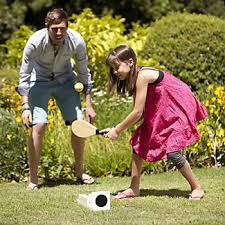
Bat and Trap (United Kingdom)
- Name of sport (game): Bat and Trap
- Name in native language: Bat and Trap
- Place of practice (continent, state, nation):
United Kingdom
- History:
Stoolball is an ancestor of cricket and bat and trap and play is pretty similar to cricket. The story goes that milkmaids started the game by throwing stones at their upturned stools while waiting for their shepherd husbands to return from the fields where they were passing the time throwing stones at “wicket gates”, a kind of field gate. A more concrete fact is that the game, in 1671, was apparently played in North Wiltshire, North Gloucestershire and near Bath. At that time the ball was 4 1/2 inches (11.43cm), stuffed with quills and very hard. The bat was a “staffe” made of withy about 3 1/2 feet (1.0668m) long. It seemed to die out after the 17th century but in 1916 Major Grantham of Balneath Manor, Sussex re-kindled it as a healthy pastime for convalescing soldiers and it has been alive ever since.
When the enthusiasts of Bat and Trap opened their new league season in May 2011 they were celebrating the 89th anniversary of the Canterbury League’s foundation. It was in May 1922 that the first round of League matches were played in the city of Canterbury, Kent. The game is undoubtedly ancient, and the earliest evidence of some such game is said to be contained in a drawing in a monastic manuscript of the 13th century, showing a monk playing a similar game. However, this manuscript has not been seen by Brin Tyndall, Andrew Wayre or Peter Guise of the Canterbury Bat & Trap League who kindly provided a substantial amount of this historic information. It is not possible to state that the game was devised at a particular time by a particular individual. Its’ origins are most surely lost in the mists of time. It is extraordinary, though, that this game was created, reputedly a forerunner of cricket, in which no-one actually had to run anywhere! The equipment used by modern players may all be made of wood by any decent carpenter, as it surely was then.
Source: https://www.batandtrap.org.uk/history/ - Description:
Each team consists of six players – fewer can play but the depelted side has to give away a free run in place of the missing player every sixth bowl.
Once the two Captains of the teams have decided the order of play by tossing a coin – one team bats and the other bowls.
The first of the six batsmen will then walk to the trap and place the ball on it. All of the opposing team will stand on the line between the posts to bowl or even attempt to catch the ball. The batsman then strikes the back of the trap with the bat. As the ball raises the batsman attempts to hit it between the posts.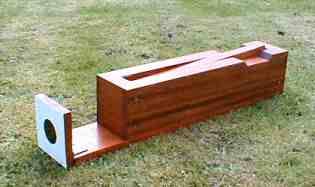
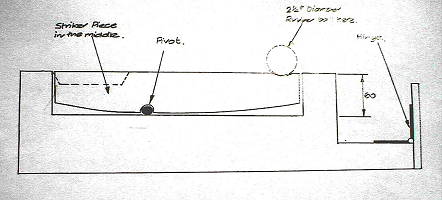
There are primarily two methods adopted by batsmen to hit the ball – either from the side or behind the trap.01 Side Batting 1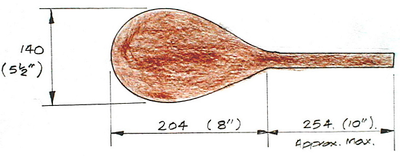
The batsman is allowed to strike the trap twice without hitting the ball. However, should the batsman strick at the ball a third time and miss then he is out.
I the batsman fails to hit the ball between the posts then he is out. If a fielder catches the ball the batsman is out, with the following provisos: The catcher must have one foot touching the ground on or behind the line, and the ball must be caught in front of the line. A batsman striking the ball more than seven feet high at the bowler’s end even if it’s between the posts shall be out.
The batsman having struck the ball between the posts shall then stand well clear of the trap (but not behind it) until the ball is bowled back.
No bowler shall bowl more than one ball in six. All bowlers shall bowl in batting order. The bowler must have one foot behind the line and on the ground when bowling. Bowling shall be underarm only.
If the bowler knocks down the flap the batsman is out. The batsman must not touch the ball before it reaches the trap. One run is scored if the ball is hit between the posts and the bowler fails to knock down the flat.
The fielding team must remain on the field during the innings. In the event of the ‘No Ball’ a rund shall be scored and the batsman cannot be bowled out. The player bowling the ‘No Ball’ will not bowl again until his next turn.
The process of batting and rotated bowling continues until all the batsmen are out. The teams then rotate and the process is repeated. The team with the highest number of runs wins the leg. A match will consist of the best of three legs with all three being played. Captains will toss a coin for choice of play before commencing each leg.
Source: https://www.batandtrap.org.uk/basic-playing-rules/ - Current status:
Practiced. It is still played in Kent, and occasionally in Brighton.
- Contacts:
Canterbury & District Bat & Trap League
Webside: http://www.batandtrapleague-canterbury.uk/
Fb: https://www.facebook.com/groups/canterburybatandtrap/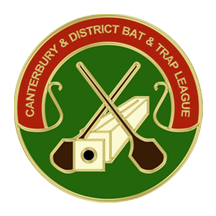
East Kent Friendly Bat and Trap
Webside: http://www.batandtrap.co.uk/ - Sources of information :
Articles:
http://www.roundhill.org.uk/main.php?sec=history&p=The_real_Bat_and_BallVideo:
https://www.youtube.com/watch?v=gLSY6t8Of7s
https://www.youtube.com/watch?v=fV8Bk64YaXo
https://www.bbc.com/news/av/uk-england-40820448/learning-how-to-play-bat-and-trap - Gallery:
- Documents:

